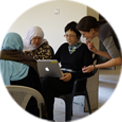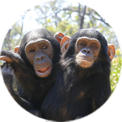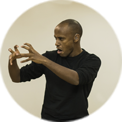Constructing Discourse Complexity with the Body
Svetlana Dachkovskyi,ii, Rose Stampii,iii, and Wendy Sandlerii
iUniversity of Haifa, iiGordon Academic College of Education, iiiBar Ilan University
Human language is understood to be a complex system. Does language start life with such complexity, or does it develop gradually over time? A preliminary study of the emerging Al-Sayyid Bedouin Sign Language suggests the latter, showing that additional bodily articulators were recruited by successive generations of signers to convey new linguistic functions. To test these results and explore this phenomenon systematically, we study three age groups in a different sign language of the same age, Israeli Sign Language (ISL), and approach the analysis with hierarchical models of discourse structure that are well established for spoken languages.
We confirm that, as with ABSL and other, more established sign languages, discourse relations are marked primarily by bodily movements by all age groups. However, by intricate coding of body movements in 15 narratives, we find that only younger signers distinguish different levels of the discourse hierarchy with their bodies: Higher levels are marked by larger movements and more articulators, while lower levels are marked by smaller movements and fewer articulators. Older signers do not reliably distinguish between these levels, tending to use the same body actions regardless of the level of the discourse relation. Younger signers also use fewer and more reduced articulations for all discourse relations, than older signers. The study reveals how linguistic expressions gradually become more complex as a language matures.







